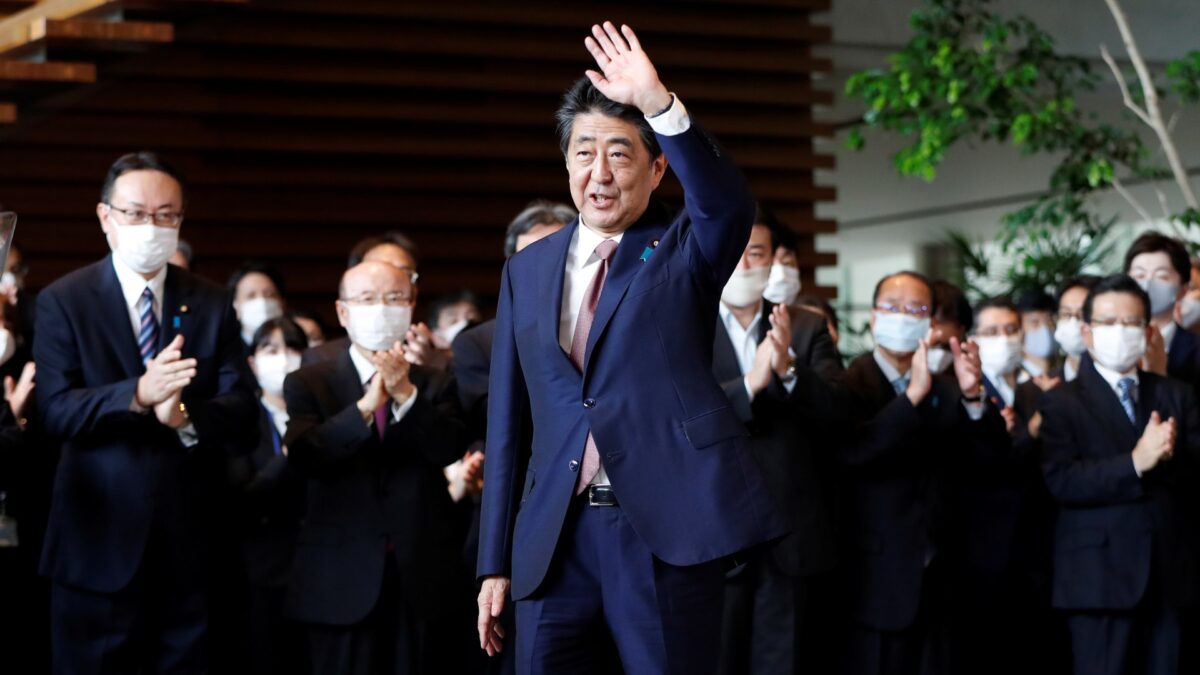Abenomics, an urgent obituary
«Under Abe, Japan became the great experimental laboratory for what had been unthinkable everywhere until then»

Issei Kato | Reuters
Though not occurring exactly amid hurrays or applause, the retirement from office of Shinzo Abe, the innovative and unorthodox prime minister of Japan from 2013 onwards, has, leaving aside the catastrophic ravages of COVID-19, put the spotlight again on the fact that the rickety levels of global economic growth in the years after the Great Recession, more than an economic problem, illustrate a parallel void of ideas.
That is because the chronic anemia of the figures for macroeconomics in the self-styled developed world — and the case of Japan has for many year embodied the highest example in this respect —, points above all to a very deep structural crisis in the dominant paradigm itself, that is to say, in the abstract theoretical models with which politicians, academics and business managers try to decipher the internal logic of the economic reality around them. It is just that Japan, with its now chronic situation of permanent paralysis, is simply impossible to understand by appealing to the neoclassical model, the one inspiring liberal orthodoxy in political economy, or the different varieties of keynesianism no less in vogue today. There is no way to understand the case of Japan, no matter what theoretical perspective it’s seen from. It’s that simple.
It so happens that between 1950 and 1973 Japan was a skyrocket. Year after year its GNP grew to stratospheric levels, 11% on average, which is unattainable, a pipe-dream, even for present-day China. And then one day, around the middle of 1990, suddenly, everything came to an abrupt halt. Why? In reality, nobody knows. It’s been like that for thirty years, thirty years in which all the charts, all the Japanese economic indicators came to adopt the canonical figure of the flatlining encephalogram. Without even the slightest hint of an explanation the skyrocket turned into a little tricycle. Thus, since 2008, they «grow» at the average rate of 0.22%, a rather good level compared to the previous years’ data, when they were much closer to a stark 0% growth. That frame, of centuries of stagnation, was the breeding ground that gave rise to the intellectual heresy that would come to be known as Abenomics, an extravagant vegetable soup made of different bits of economic doctrines intrinsically going against one another. Faced with the exasperating lack of results of the conventional measures applied previously, Abe tried out a strange mix of Keynesian therapies seasoned according to conventional neoliberal recipes, all of it generously garnished,with a rash lowering of taxes, inspired in Laffer, the man known for the eponymous curve.
Under Abe, Japan became the great experimental laboratory for what had been unthinkable everywhere until then. He was willing to do a bit of everything and a bit of everything he did. The result? Nothing. Nothing at all. Absolutely nothing. Everything has been tried and everything has failed. And if it has failed there, there are not very many reasons to believe that it is not going to fail here too.
For it so happens that all the strange moves, to find some way to put it, that the European Central Bank has been making, under Draghi or with the arrival of Lagarde, are no more than the repetition, down to the last millimeter, of what the Central Bank of Japan introduced as innovations. All of them. We Europeans are like Japan, lagging behind by five years.
The negative interest rates, and the famous quantitative easing, the conversion of the central banks into obsessive, overeating consumers of tons and tons of private and state debt, are strictly Japanese failures that the Europeans and the Americans have rushed to imitate. The infinite intellectual arrogance of academic economists keeps them from seeing that they do not understand what is happening, this more and more marked tendency toward stagnation everywhere. They do not understand it. Supposedly, the heaps of new money issued by Europe, Japan and the United Sates after 2008 were bound to begin to provoke inflationary tensions at some point. Well, exactly the opposite has occurred: the fear today is for deflation. Like Abe in his day, we too, in short, are literally giving money away in order to try to put a stop to the listless and routine flaccidity of consumption and investment. But not even free money will wake these two areas up. Not even free money. The worst thing about Japan is that it may well be our future. Which is frightening.

